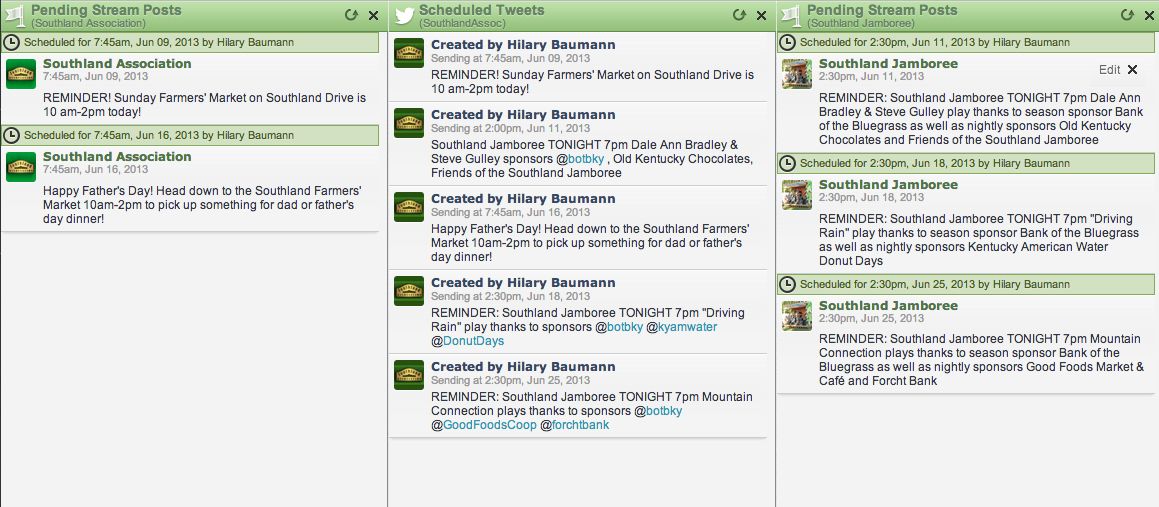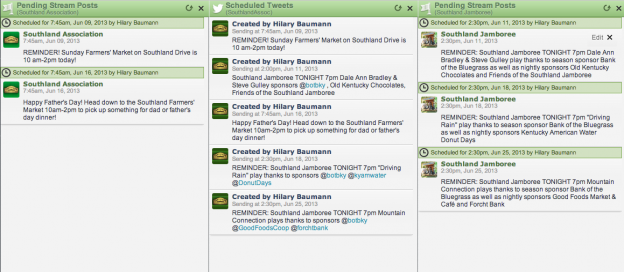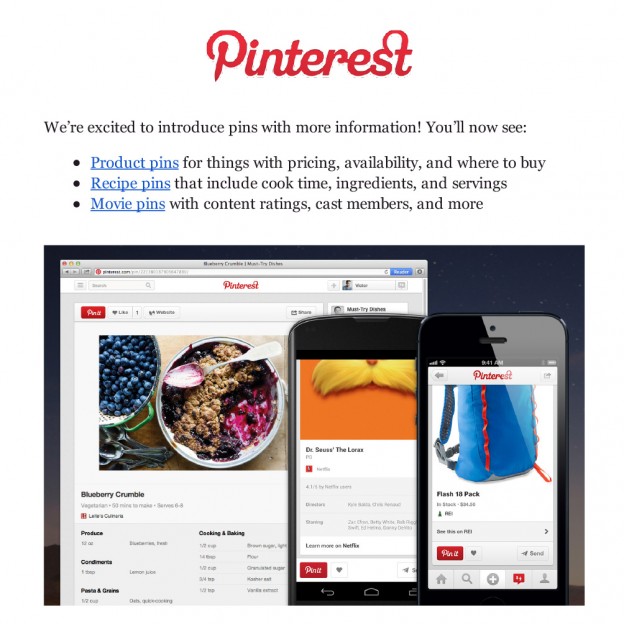Special notes about the event:
There are MANY factors outside of my own efforts that impacted the success of this event. From the 10th district video clip that ran on G3TV and youtube to Kristy going on Lex18 and Channel36 the day before the event. And many people shared this event info with their own subscriber lists via email and social media. So this kind of growth in this short of a period of time was accomplished through participation of many different parties and individuals.
What some of you might not know however is the efforts that I put into social media and the website and are some of the things I do for clients of Fascination Design. The things that weren’t event paperwork to secure police or the stage (because I don’t do that for clients!) Since I don’t often speak about what I do for the Southland Association and also because website details and social media efforts are often ignored if they aren’t mentioned, I put together this quick overview.
The Website:
- The website is multi platform multi device friendly and worked on browsers back to ie 8 (older still worked but wasn’t as pretty in older browsers.) It is a responsive website and will adjust in size and look good from desktop to smartphone.
- The website evolved as deadlines passed. Vendors & sponsorship opportunities were in main menu and moved to a less prominent location for example.
- FAQ information was added as people asked questions that were general enough that other people might also ask the same questions.
Website Analytics:
- Unique viewers “user” growth: from March 27th when the site went live at zero to May 18th 2015 there were a total of 4,733 people who visited the site at least once.
- 2,690 (56.82%) Mobile / 1,628 (34.39%) desktop / 416 (8.79%) tablet
- Traffic sources :
- 8% social : of that percent 95.62% facebook / 1.80% twitter / 1.43% yelp / 1.15% meetup
- 8% direct
17.3% organic search (google, bing, yahoo) - 1% referral (other websites, e-blast/enewsletters etc.)
Facebook:
- Growth of likes to page: 0 January 14th to 825 likes May 18th 2015
- Issues and benefits of a Facebook event. For an event there’s no tracking of posts made to the event listing and inaccurate tracking of event info in insights BUT each announcement posted to an event goes to entire audience. Too many announcements and you annoy people. Final tally on the Facebook event was 1.7k “went” and 2.1k had been invited
- There were jumps in followers, shares and likes each time posts were made to the page and event listing.
- Posts to event were made at specific intervals and ramped up closer to the event. All posts to the event were also made to the page as well. Posts were intended to give people something visual and informative so they could get an idea of what the event might be like. Many also included the date and time info in case someone shared the photo instead of the page or event.
- Most questions from users were responded to in a timely manner. Interaction increases likelihood that someone would attend.
- Photos were posted the day of the event by a variety of people (Fred, Jamie, Jim and Kristy each had access to the facebook page to post as it.)
Twitter:
- Twitter ended up a low priority due to character length but posts were made and shared there and still had an impact.
- Impressions: 8,405 tweet impressions in May. 2,200 tweet impressions in April. 265 tweet impressions in March. Total of 10,870 tweet impressions.
- With only 86 twitter followers.
- Each post on Facebook had a Twitter counterpart I just wasn’t able to tag as many people on twitter because of how I had done some of the post graphics.
Instagram:
- 134 followers on Instagram as of May 18 2015
- Photo centric posts pre-event tagging businesses that were on Instagram. Hash tagged as well.
- Photos day of the event.
- Regrammed (shared) other peoples hash tagged photos of the event with attribution.
Social media general:
- Leveraging partner social media – posts created specifically tagged to entice sharing on Facebook and Instagram. Could have been explored more with more vendors and Twitter wasn’t implemented as ideally but posts were made to entice vendors and partners to share them. (Leveraging the brand recognition of with those who would be there was also one of the reasons I put so much info on the poster.)
- If someone was a vendor or sponsor for the event I looked for them and followed them as the Southland Street Fair on Facebook, Instagram, and Twitter if I could find them there. Not all businesses were on all platforms and there may be some I missed if they were difficult to find. This caused some people to like/follow back and share information as it was posted.
- Hashtag #southlandstreetfair was used on posts starting a month prior to the event. #sharethelex was also often used and #lexky #lexingtonky and #solex and a few others were used here and there.
- Select posts were shared on the existing Southland Jamboree accounts and Southland Association accounts. Facebook/Twitter/Instagram
- Information was also posted once to: Neighborhood Association groups, Bike Lexington group, you grew up in South Lexington if… group. Each message tailored to the group and their interests.
- Stats for Social media and also on the website were something I loosely monitored throughout the last month and a half.
E-news:
- Summaries of event info was sent out to Southland Association enews subscribers.
- List was created for vendors and vendors were updated several times this way (we should have also made phone calls to all vendors, not just emailed. Note for 2016.)
- List was created for vendors who were late and interested in the 2016 street fair (early notice list includes 2015 vendors.)
Snail mail:
- With Jamie and Hilary A’s help, we mailed 310 vendor packets with info about the SA to Southland area business addresses.
If you’re interested in seeing additional reports or figures for this event, please contact Fascination Design.
Fascination Design also provided the designs for the posters, banners, and other key materials throughout.
It’s enough to deserve an additional post or two outlining those processes.
New SA members since mid-March: 7 new Southland Association members
Related goal for new SA Members: material on new SA website showing what we’ve done and public oriented info about event. Fun photos. Community. Should also help bring in more members once completed.
Overall this was an amazingly successful event.
The primary goal of the event was to have a large community event to show the viability of the Southland Drive area to the rest of Lexington and drive more people to area businesses over the long haul and emphasize our sense of community that Southland has. We incorporated a lot of businesses that were local to the Southland Drive area but also brought in other local Lexington businesses to participate as vendors.
We estimate that 7-9000 people attended the event over the 5 hour period that it ran. We had over 75 vendors. And LOTS of happy people despite the heat.
Hilary Baumann as well as Jamie Giles were involved in a lot of the logistics of planning the event from vendor organization to proper paperwork filed.
And we had a very strong committee and people key in making this event happen: Kristy Yowell of Good Foods Co-op, Jim Kreiner and Catherine Trout Mitchell of ReStore, Billy Sherrow of Sherrow, Sutherland & Associates, Bill Cole, Lori Rowland Houlihan, Howard Stovall at Image360, , Fred Wholestein of Donut Days Bakery, previous 10th District Council member Harry Clarke, 11th Dist. Council Peggy Henson & aide Hilary Angelucci, Art Howard of the Ketch, Gail Lightner of Hill N Dale Neighborhood Association, Tom D’Adrea, and current 10th District Council Member Amanda Mays Bledsoe. And SO many more.

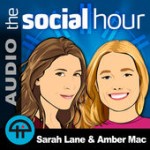 Listen to more or subscribe to the Social Hour:
Listen to more or subscribe to the Social Hour:
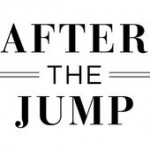 Listen to more from the After the Jump podcast series via:
Listen to more from the After the Jump podcast series via:
